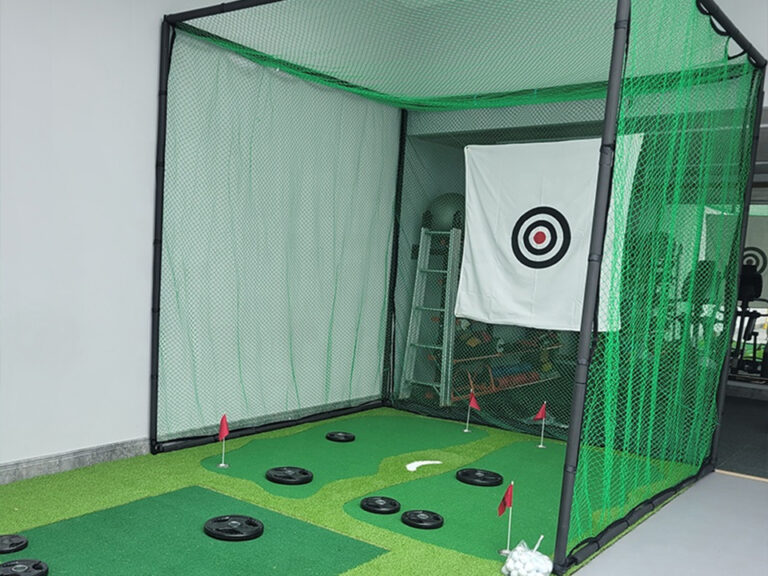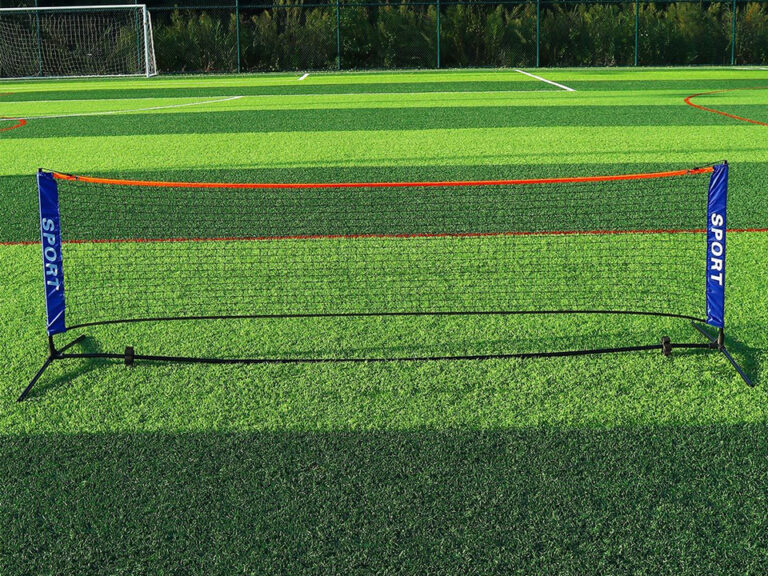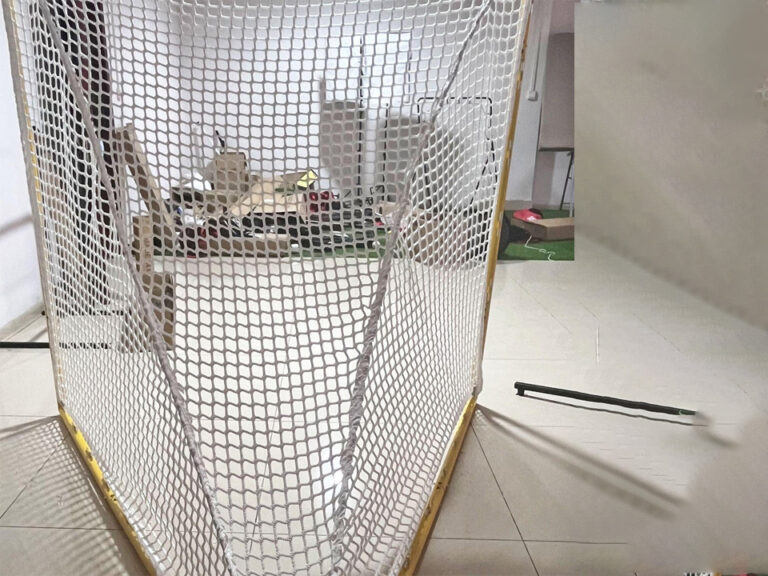How To Choose Baseball Nets For High Impact Training
If you run hard-hit batting practice every day, your nets take more abuse than any other piece of gear. When exit velos go up, cheap netting starts tearing, frames shift, and suddenly you’re talking downtime, risk, and angry parents or coaches.
Let’s walk through how to pick baseball nets for high impact training, using real facility scenarios and the kind of specs buyers care about: material, gauge, mesh, cage size, safety, and long-term cost of ownership. I’ll also plug in where FSPORTS fits in for OEM, private label, and bulk orders as a manufacturer in China.
Table of Contents
Baseball batting cage netting material and construction
High impact training starts with the right baseball batting cage netting. Material and build decide if the cage survives full-speed BP or dies after a few weekends.
Nylon baseball netting vs PE baseball netting
You’ll mostly see two families:
- Nylon baseball netting
- Great impact resistance.
- Slightly more stretch, so it “eats” the ball better.
- Often used in indoor cages or pro-level facilities.
- High-density PE / HDPE baseball netting
- Very good strength-to-weight.
- Top choice for outdoor cages because it handles sun and rain well.
- Often more cost-efficient for big installs or multiple lanes.
If you want a heavy duty option for pro-style use, look at a dense PE cage such as the softball baseball batting cage netting heavy duty PE pitching batting net. The line already targets one-piece square practice and “net only”, which fits buyers who already have steel in place and just need a tough replacement mesh.
Knotted vs knotless baseball netting
You’ll also see:
- Knotted netting
- Classic look.
- Easy to repair in-house.
- Slightly stiffer feel.
- Knotless netting
- Smoother surface.
- More even load distribution.
- Quieter in indoor spaces.
For high impact, both work. Focus more on twine thickness and layout than on the knot style alone.
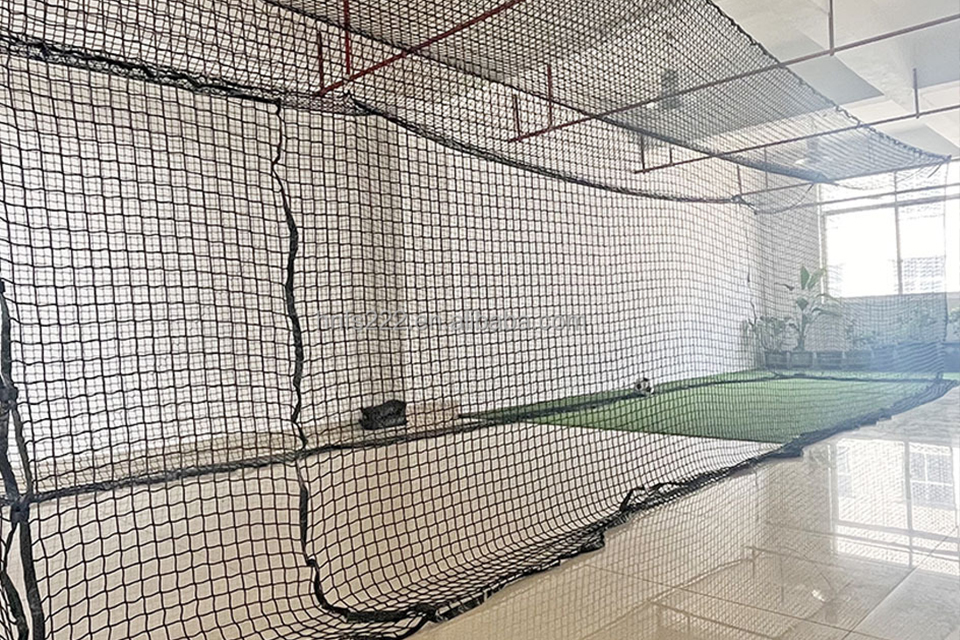
Baseball net gauge and mesh size for high impact training
Think of gauge as the “weight class” of your net. Higher gauge = thicker twine = more abuse it can take before it frays.
High impact baseball net gauge selection
Here’s a simple way to talk gauge and usage when you plan a cage or buy wholesale:
| Training level / facility type | Typical use case | Recommended net gauge range* | Mesh size | Example net style / FSPORTS product |
|---|---|---|---|---|
| Youth teams / light academy use | 2–3 sessions per week, mixed ages, low EV | Medium gauge PE or nylon | ~1 3/4″ square | 7×7 portable baseball practice net for stations and side work |
| High school / travel ball | Daily hitting, higher exit velocity, heavier bats | Medium-heavy gauge | ~1 3/4″ square | baseball softball practice hitting pitching net for on-field work, plus cage net for full lanes |
| College / pro facility | Full-speed BP, machine work, heavy usage all year | Heavy gauge, impact panel in “hot” zones | ~1 3/4″ square | baseball and softball batting cage net and frame for fixed lanes plus impact zones behind catcher |
*Exact numbers depend on your spec, but the logic stays the same: more use and more EV means thicker twine and stronger meshes.
Mesh size for baseball nets
For standard baseballs:
- ~1 3/4″ square mesh is the usual sweet spot.
- It stops the ball, keeps weight reasonable, and doesn’t mess with visibility.
If you mix in smaller balls (training mini balls, etc.), you can move to a tighter mesh in key zones. Most cages only need standard baseball mesh for the main body.
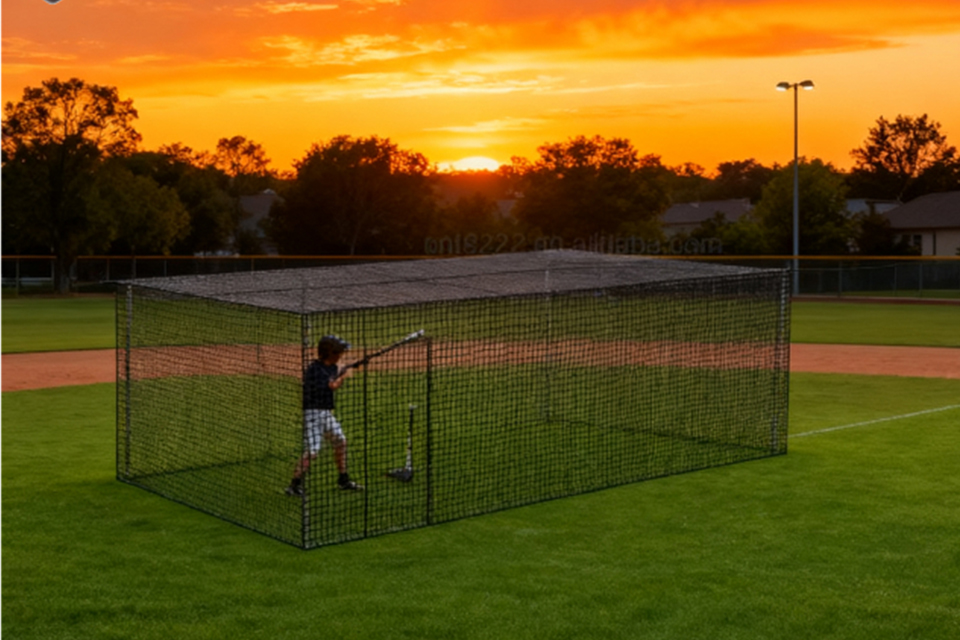
Baseball batting cage size and safety distance
The net itself might be strong enough, but if you squeeze it against walls, lights, or cars, you still have a risk issue.
Baseball batting cage netting size
Common cage footprints for serious training:
- Length: around 55–70 ft for full hitting lanes.
- Width: 12–14 ft so hitters and coaches don’t feel boxed in.
- Height: 10–12 ft to clear normal swing paths, especially for tall hitters.
If you want a plug-and-play solution, a combo like the baseball and softball batting cage net and frame gives you a matched set. That means fewer surprises when you assemble it in a warehouse, school, or retail demo floor.
Baseball netting for indoor batting cages
Indoor is where spacing and safety distance really matter:
- Keep the net off the walls and windows so the ball never transfers force to hard surfaces.
- Let the net hang with some slack so it can move and absorb energy.
- Add barrier netting behind the main cage if there’s foot traffic or glass nearby.
A panel like the 12 ft x 9 ft sports barrier net baseball practice hitting net works as an extra layer behind the cage for high-risk areas, or as a standalone backstop for stations.

High impact baseball net installation and impact panels
You can buy the right mesh and still get problems if the layout and impact zones aren’t planned.
Impact zones and L-screen protection
Every cage has “hot spots”:
- Behind the catcher or backstop.
- Directly in front of the machine.
- Around the L-screen where balls come back hard off late swings.
Here you don’t want just one thin layer. You want double-layer netting or an impact panel.
- Use a dedicated L-screen net like the baseball softball pitching screen pitcher protection net L-screen to protect pitchers and machines in the tunnel.
- Add an extra impact sheet behind home plate or where your hardest hitters stand for tee and front toss.
If you run lots of on-field reps instead of fixed cages, you can set up portable stations with the 7×7 baseball practice hitting net and a matching L-screen. That way your “high impact” zones stay modular and easy to move.
Rebounders and pitchback nets for high-volume drills
For arm care and fielding reps, you can use rebound nets to take pressure off your main cages:
- A pitchback like the infinity pitchback screen rebound net for baseball softball training handles thousands of throws without tying up a cage lane.
- You can park these near the outfield or side walls and keep the main cage free for live hitting.
This setup spreads the total impact across more nets, which extends life and cuts replacement frequency.

Baseball net maintenance for training facilities
High impact nets are consumables. Good net care just slows the burn rate.
For B2B buyers, this matters because fewer failures mean fewer warranty claims, fewer returns, and less drama with end users.
Practical habits:
- Weekly checks
- Walk each lane.
- Look for thinning twine, small tears, or seams that start to open.
- Patch early
- Fix small holes before they turn into full panels ripping under one bad swing.
- Rotate panels when possible
- If one section takes the worst punishment (typical center-back of the cage), swap panels around during off-season.
- Protect from weather
- For outdoor setups, lower nets or store them when you expect storms or long idle periods.
Small stuff like using a baseball and softball ball caddy also helps. Less bending and scrambling on the floor means fewer players stepping into the net or dragging balls under it.
FSPORTS custom baseball nets for B2B buyers
If you’re a retailer, wholesaler, or brand owner, you’re not just choosing a net. You’re choosing a supply partner who can hit your specs and keep SKUs consistent across seasons.
Here’s where FSPORTS comes in as a Top 1 premium sports netting manufacturer in China:
- OEM / ODM for baseball nets
- Custom sizes for cages, backstops, and field screens.
- Your logo, your colorway, your packaging.
- Bulk and wholesale orders
- Portable nets such as the 7×7 factory wholesale portable pitching hitting baseball net are ideal for e-commerce bundles and retail wall displays.
- Full training ecosystem
- Cages and frames: baseball and softball batting cage net and frame.
- On-field stations: baseball softball practice hitting pitching net.
- Protection screens: baseball softball pitching screen L-screen.
- Add-ons and accessories like the baseball and softball ball caddy to complete training kits.
Because the factory also builds nets for golf, soccer, lacrosse, pickleball, and more, you can consolidate sport categories under one manufacturer and simplify your sourcing, MOQ planning, and global shipping.
Quick recap
When you choose baseball nets for high impact training, keep this simple checklist in mind:
- Strong material (nylon or high-density PE) with the right gauge.
- Baseball-friendly mesh around 1 3/4″.
- Cage size that fits your space, with real safety distance.
- Impact panels and L-screens in hot zones.
- Rebounders and side stations to spread wear.
- A supplier like FSPORTS who can handle custom specs, OEM branding, and bulk runs.
Get those pieces right, and your hitters can swing full speed every day while your netting quietly does its job season after season.

